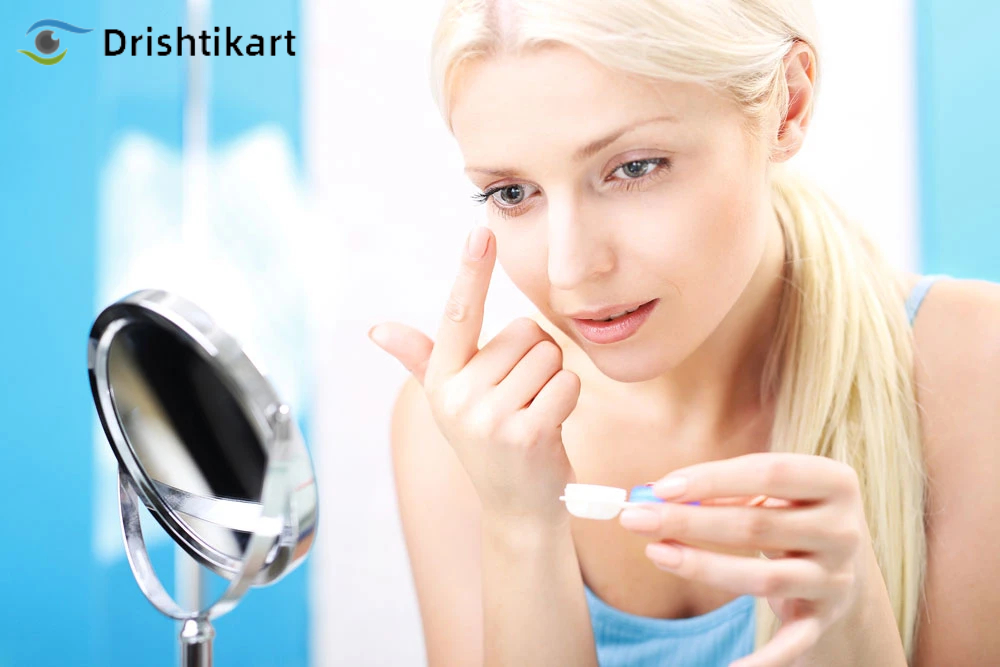 10 Apr 2021 | Marketing | Author: Drishtikart India | 988 views
10 Apr 2021 | Marketing | Author: Drishtikart India | 988 views
Which Contact Lenses Are Right for You?
There are a lot of things to consider when choosing a new pair of glasses, but what about new contacts?
There may not be quite as much variety because you don’t have to think about frame shape and color, but there are still several different types of contact-lenses to choose from. Let’s take a closer look at some of the main variables.
Dailies or Monthlies?
Would you prefer to wear the same contact lenses every day or throw a pair away every time you take them out? There are advantages and disadvantages for each type. Dailies reduce the risk of infection because they go straight from their packaging to your eyes. They’re also very convenient because you don’t have to worry about cleaning them. They do, however, tend to be pricier.
If you don’t mind the cleaning routine and prefer to spend less on your lenses, monthlies could be a better option, and if you want the best of both worlds, there are also weekly disposable lenses! No matter which ones you choose, make sure to follow the directions for how long to wear them. Don’t stretch them out beyond the recommended time.
Daily or Extended Wear Lenses?
In addition to how long each pair of contacts is meant to last, there are also differences in how long they are designed to be safely worn before being removed. For the sake of the health of your eyes, it is essential to only wear your contacts for the recommended length of time. Do not wear daily lenses as if they were extended wear lenses, and don’t push it with extended wear lenses.
The reason it’s so important to follow these instructions is that the longer we wear contacts, the more bacteria can stick to them. It’s like wearing a tiny petri dish on your eye, which makes eye infections much more likely. If you think you’re going to forget to take your contacts out before you fall asleep sometimes, you might do better with extended wear.
Material: Soft or Hard?
The two most common options for modern contact-lenses are silicone hydrogels (soft) and plastic (hard). Both materials are quite breathable, allowing plenty of oxygen to reach the surface of the eye. Soft lenses offer better comfort and won’t slide around as much, but they can’t correct as many types of vision problems as the hard plastic lenses. Plastic lenses are also easy to put on and clean, they last longer, and they cover less of the eye.






